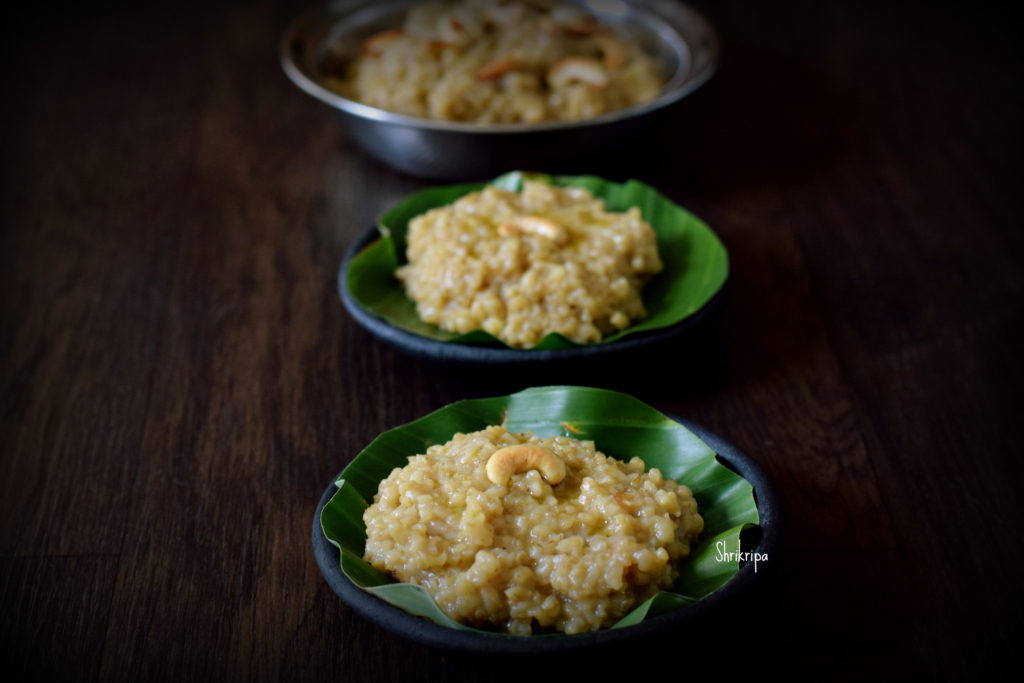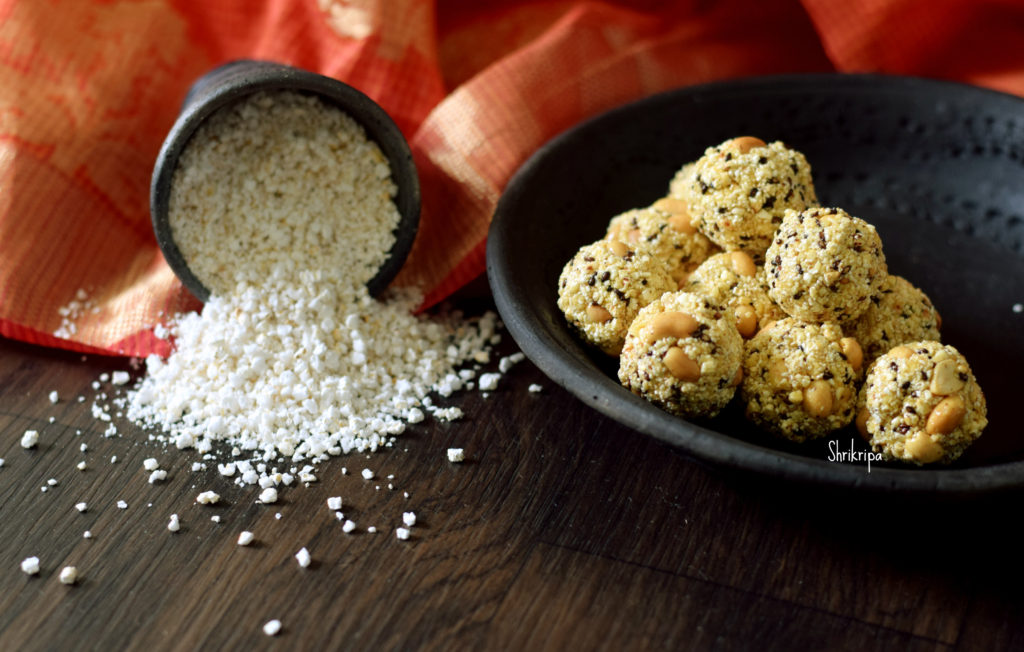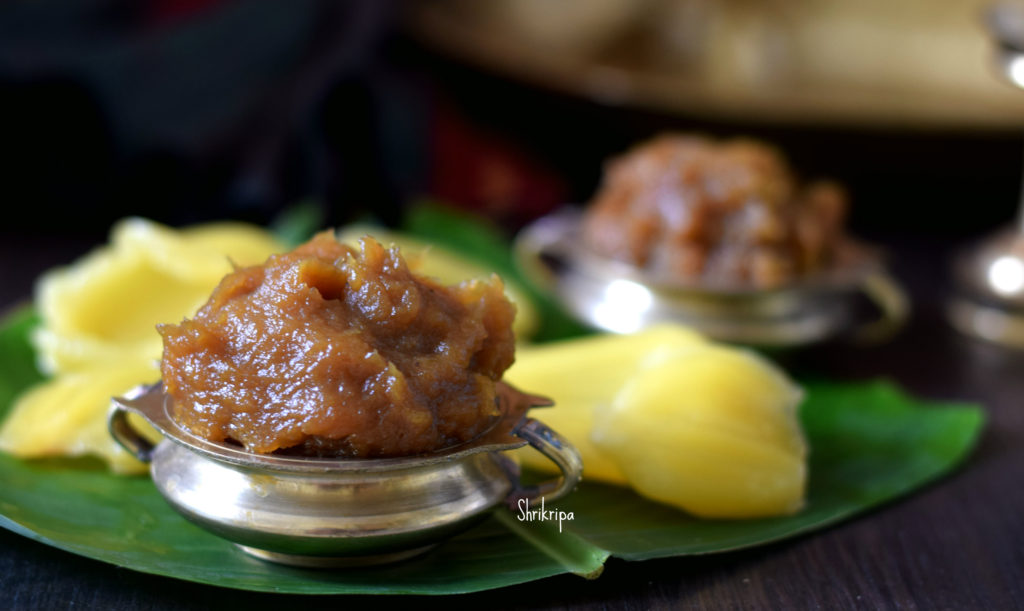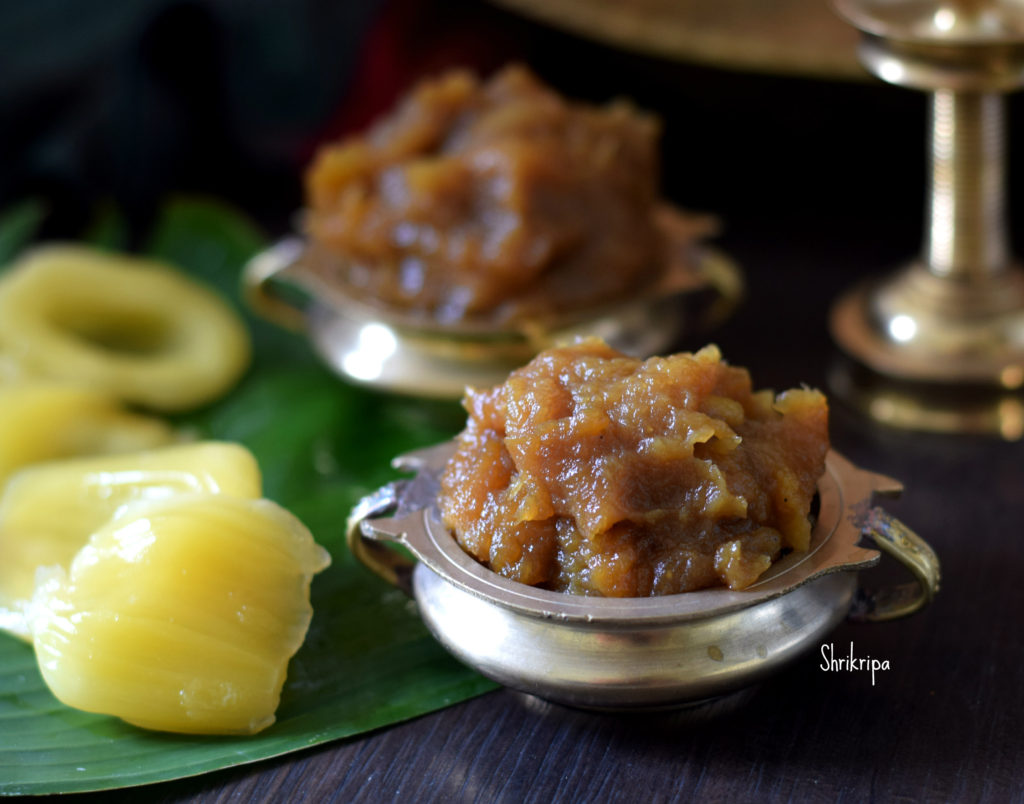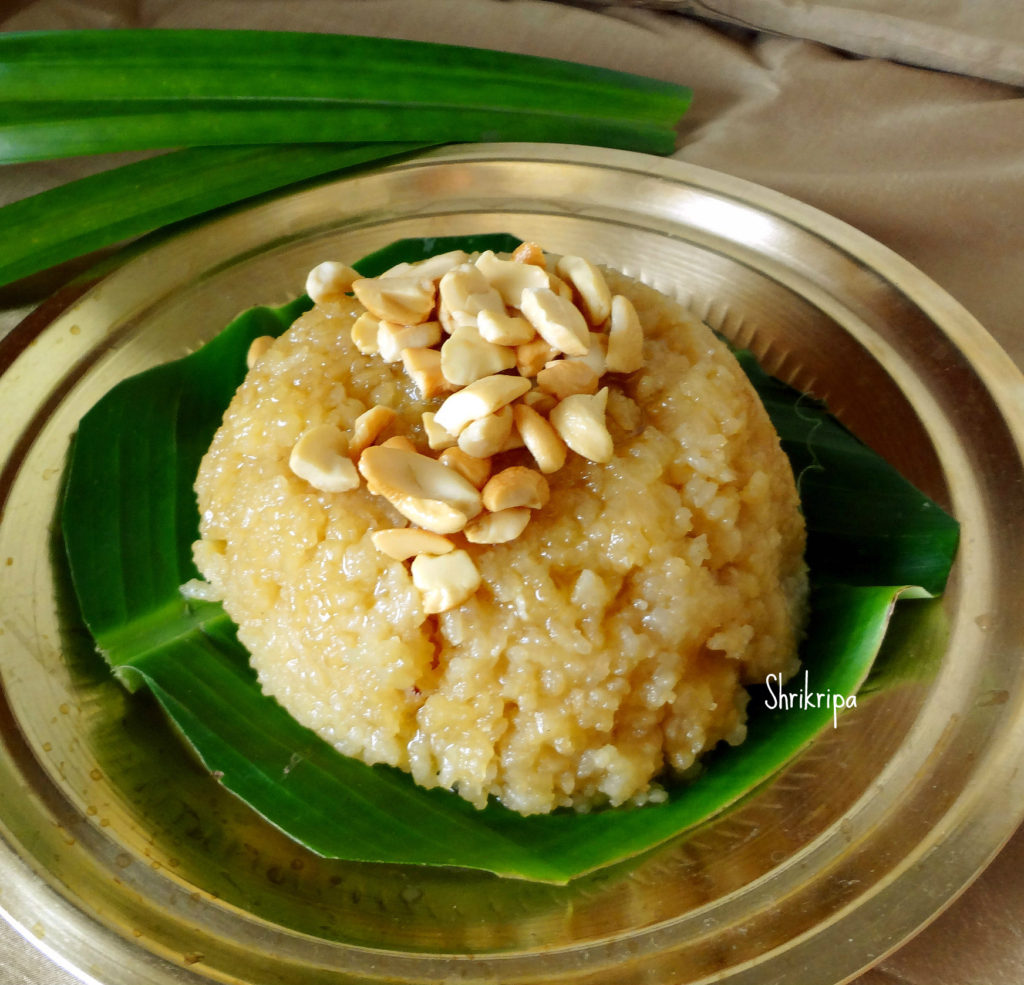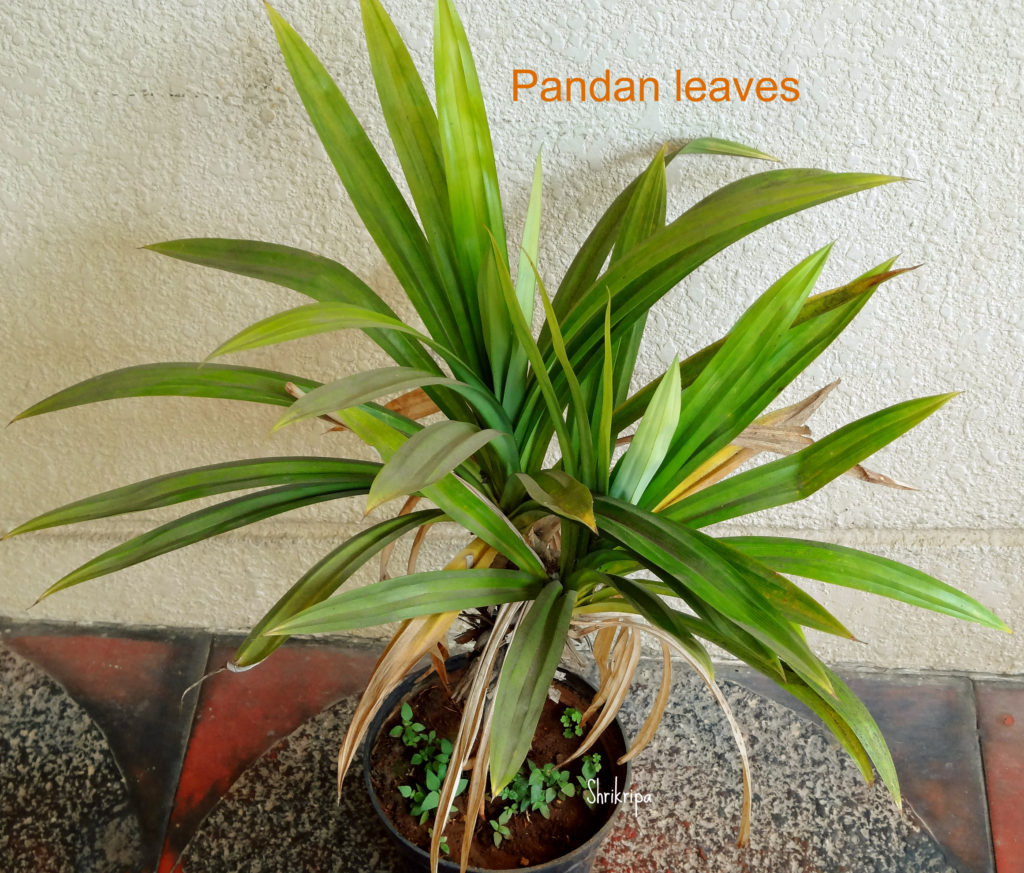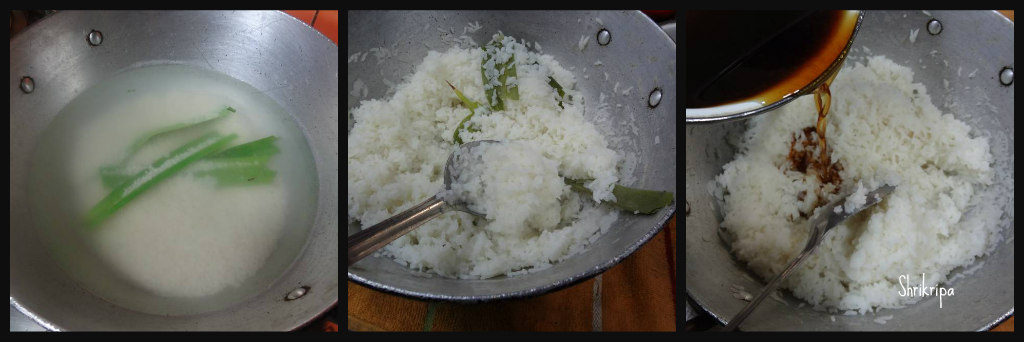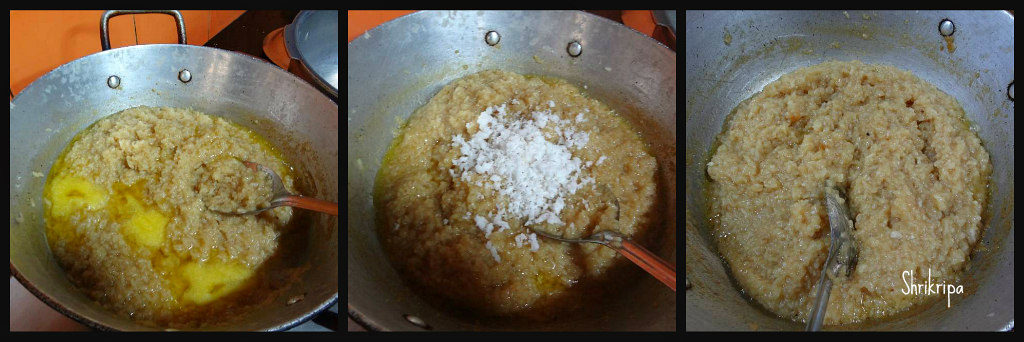Ganesha Festival aka Vinayaka Chaturthi is the time, when we indulge in so many varieties of traditional delicacies- Genasale, patholi, Chakkuli or Chakli– to name a few. Two varieties of Modaka (steamed and deep fried) Panchakajjaya, Halittu (nothing but rice noodles), Guliyappa are the main things which we normally find in our region.
Ganesha has one more name as a “Modaka Priya” means, he loves to eat Modaka. Steamed medakas are also known as Ukkarisida Modaka / Ukdiche modak in India.
Which is ground rice batter, which is cooked until it reaches a ball form and kneaded and stuffed with a coconut jaggery filling and steam cooked.
Some people or in some region, people do use rice flour, instead of soaked and ground batter.
Now a days, people make various kinds of modak from, khoya, chocolate, dry fruits etc. But traditionally it is done in this way.

Procedure goes like this –
Ingredients:
Dosa rice /white rice – 2 cups
Grated coconut – 1 cup
Grated Jaggery – ½ cup (to taste).
Ghee/ Clarified butter – 4 tsp.
Salt to taste
Modaka mould – (optional)
Method:
-Wash rice and soak it for 2 to 3 hours.
-Grind soaked rice into smooth paste by adding water and salt.
-Now keep thick bottomed kadai, pour the ground batter and add some water to make thin consistency.

– Now add 2 tsp of ghee and start heating this mixture by continuous stirring. When it becomes little thick and forms a mass, switch off the gas and keep it aside to cool.
-When it is ready to handle, knead it further and form a smooth dough.
-Cover the dough with wet cloth, to retain moisture.
In the meantime, make sweet coconut-jaggery mixture. In a thick bottomed vessel add jaggery and ½ cup of water and heat. If you find some impurities in jaggery syrup, sieve this liquid and heat further and add fresh grated coconut and cook until it is sticky and forms mass. Add remaining ghee to this and mix. Now stuffing is ready.
Method to make Modaka by using mould-
-Grease the mould by using ghee.
-Take a lemon sized dough at a time, knead a little and use.

-Close the mould, apply the dough all around the mould, fill a tea spoon of coconut jaggery mixture by leaving very little place at the neck of the mould.
-Now take a tea spoon of dough and seal it. Now Stuffed Modaka is ready.
-Proceed until all the dough is over and arrange all these medakas in an idli steamer.
-Steam cook for 15 to 20 minutes.

If you are using Rice flour or Modaka flour:

Ingredients:
Rice flour – 2 cups
Water – 2 cups
Salt
Ghee – 1 tea spoon
Method:
-Boil water by adding salt, ghee in a thick bottomed pan.
-When water starts to boil, add rice flour and keep in a simmer for 5 minutes.

– Switch off the gas. After some time, knead the dough and follow the same procedure as above.
-While kneading, if needed , sprinkle some hot water and proceed.

-Proceed until all the dough is over and arrange all these medakas in an idli steamer.
-Steam cook for 15 to 20 minutes.

Note:
-If you don’t have Modaka mould, take a lemon sized dough, make a 4” disc by using your thumb and fore finger of both hands.
-Keep this in your left palm, in a cup shape, put filling (smaller in size) and cover it. Arrange all these medakas in an idli steamer.
-Steam cook for 15 to 20 minutes.
